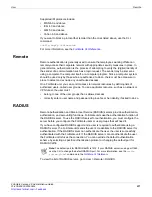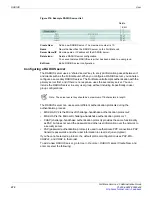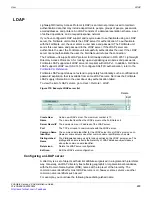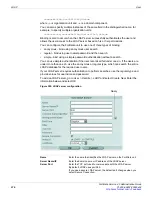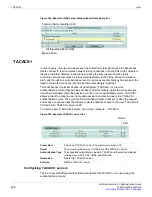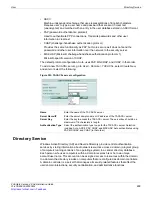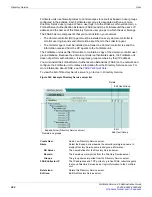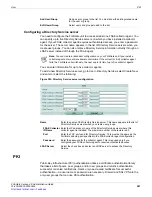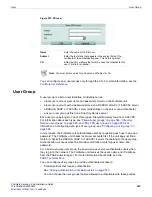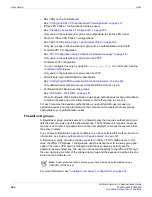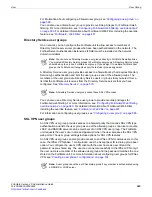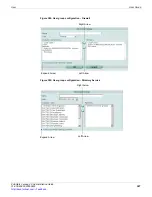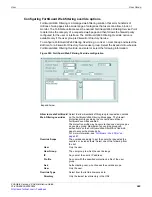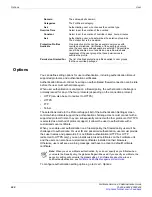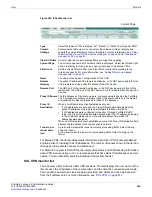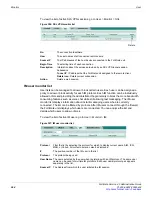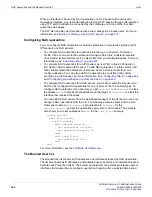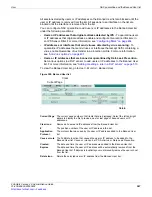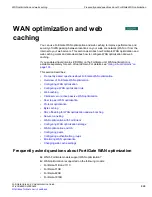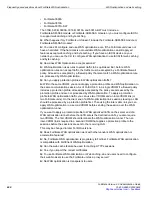
User
User Group
FortiGate Version 4.0 Administration Guide
01-400-89802-20090424
585
•
For information about configuring a Firewall user group, see
You can also use a firewall user group to provide override privileges for FortiGuard web
filtering. For more information, see
“Configuring FortiGuard Web filtering override options”
. For detailed information about FortiGuard Web Filter, including the override
“FortiGuard - Web Filter” on page 487
.
Directory Service user groups
On a network, you can configure the FortiGate unit to allow access to members of
Directory Service server user groups who have been authenticated on the network. The
Fortinet Server Authentication Extensions (FSAE) must be installed on the network
domain controllers.
A Directory Service user group provides access to a firewall policy that requires Directory
Service type authentication and lists the user group as one of the allowed groups. The
members of the user group are Directory Service users or groups that you select from a
list that the FortiGate unit receives from the Directory Service servers that you have
configured. See
“Directory Service” on page 579
You can also use a Directory Service user group to provide override privileges for
FortiGuard web filtering. For more information, see
“Configuring FortiGuard Web filtering
. For detailed information about FortiGuard Web Filter,
including the override feature, see
“FortiGuard - Web Filter” on page 487
For information on configuring user groups, see
“Configuring a user group” on page 586
SSL VPN user groups
An SSL VPN user group provides access to a firewall policy that requires SSL VPN type
authentication and lists the user group as one of the allowed groups. Local user accounts,
LDAP, and RADIUS servers can be members of an SSL VPN user group. The FortiGate
unit requests the user’s user name and password when the user accesses the SSL VPN
web portal. The user group settings include options for SSL VPN features.
An SSL VPN user group can also provide access to an IPSec VPN for dialup users. In this
case, the IPSec VPN phase 1 configuration uses the Accept peer ID in dialup group peer
option. You configure the user’s VPN client with the user name as peer ID and the
password as pre-shared key. The user can connect successfully to the IPSec VPN only if
the user name is a member of the allowed user group and the password matches the one
stored on the FortiGate unit. For more information about configuring user groups for IPSec
VPN, see
“Creating a new phase 1 configuration” on page 534
.
Note:
You cannot use Directory Service user groups directly in FortiGate firewall policies.
You must add Directory Service groups to FortiGate user groups. A Directory Service group
should belong to only one FortiGate user group. If you assign it to multiple FortiGate user
groups, the FortiGate unit recognizes only the last user group assignment.
Note:
A Directory Service user group cannot have SSL VPN access.
Note:
A user group cannot be an IPSec dialup group if any member is authenticated using
a RADIUS or LDAP server.
Summary of Contents for Gate 60D
Page 705: ...www fortinet com...
Page 706: ...www fortinet com...

